Kinda Hot Crazy Dude In Charge of Chicago Now

Rahm Emanuel
killed them in yesterday’s election in Chicago, receiving more than twice the number of votes than the runner-up, Gery Chico, who has the name recognition of a smelly and obscure Asian fruit. (And more than six times the votes of Carol Moseley Braun, the only African-American woman to ever be elected to the U.S. Senate.) Now, Rahm will begin killin’ em for real! I almost wish I lived in Chicago, taking your Ravenswood trains and going to, uh, the Loop I guess, on pretend business. Chicago is basically The Matrix, right? That’s good, because Rahm is pretty much your Sims mayor.
What It Feels Like to be Kanye West is What It Feels Like to be American
by Sunny Biswas
So how do you feel if you’re Kanye West (or at least “Kanye West,” Twitter personality)? Well, you know you’re amazing and no one feels worse about it than you. You’re a superstar and no one could possibly be more alone. Acknowledging this, your heart swells like you’re becoming a better person while all the time you remain convinced that you were already awesome anyway. Self-pity mixed with delusions of grandeur — the identifying marks of a very particular type of asshole who feels like he should be congratulated simply for meaning well.
And nowhere do you get such a good approximation of what it feels like to be Kanye than that brew of sex, sentimentality and synapse-exploding amazingness that makes up the video for “All of the Lights.”
So how does the video simulate Kanye World? To start off, there are the Gaspar Noe-inspired titles and general war-on-epileptic strobe light vibe which is pretty much guaranteed to blow minds. There’s Rihanna looking so insanely hot that the only reference point I can think of is the end of Raiders of the Lost Ark. Then maybe count in there the obligatory Michael Jackson references (Kanye on a cop car and Kid Cudi in red leather). Everything is as awesome and ridiculous and overwrought as something directed by a dude whose first name is Hype should be. And awesome, ridiculous and overwrought are just other names for the Kanye West persona. But there’s also this adorably serious-looking little kid wandering around, and that’s the part I find troubling.
Let me insert here that I view celebrity Kanye West differently than I do Kanye West the artist (Kanye West the real-life person is of course, at this time, unknowable to us). At his best, Kanye the musician writes songs that are self-aware and self-deprecating, traits you don’t associate with Kanye the celebrity. Take “All of the Lights” as a song — a huge backing track behind a sordid story about a deadbeat dad and abusive husband. The lyrics work to undercut the epic-ness of the music, an action-movie soundtrack for an indie flick. But the video is all Kanye the celebrity. Everything huge! The BIGGEST hip-hop star, the HOTTEST female pop singer, the CRAZIEST visuals and, uh, KID CUDI. And if last year taught us anything, all caps is how Kanye the celebrity interprets the world.
This would be fine on its own — making people feel like superheroes for three to five minutes at a time is one of the greatest things that pop music does. But the addition of sappiness to the mix in the form of that little girl is toxic here. Cheap emotion against such an expensive backdrop makes the emotions throw shadows that are as huge as everything else on display. So Kanye isn’t just better than you at being amazing, he’s better than you at feeling things too. It’s an unpleasant reminder that one of the great things that pop also does is evoke the mindset of a teenager. That can be beautiful, but in this case it comes off as one of the ugly parts of being young and stupid enough to believe that you somehow feel everything more strongly than anyone else in the world ever has. That your experience is more meaningful than everyone else’s. Self-satisfaction along with self-pity — an unlikely sounding but common enough combination. Which, by the way, is also a good capsule description of the mindset of the classic ugly American.
By my completely scientific and comprehensive analysis, one of the most common stereotypes of Americans that abounds in the world relates to that mode of self-congratulatory complacency (and it’s a criticism Americans make about other Americans, too). We defund Planned Parenthood because we’re against killing potential babies, but we can’t bother to do anything about actual ones. We’re all for democracy in Egypt even though two months ago we didn’t care that we were propping up the dictatorship. Wikileaks is the best thing ever, but what do you mean we’re supposed to do something with that information? We are, without a doubt, a force for good even though it looks suspiciously like we’re not doing very much.
This is obviously not true for all (or even, most) people. The events in Wisconsin the past couple weeks have shown that people are willing to take action beyond writing an angry blog comment. (And in fact, being convinced that out there somewhere exists a group of faceless, apathetic assholes who are ruining things for everyone with their hypocrisy while you don’t do very much yourself is a pretty good sign that you’re infected.) But trying to do more than care — to actually risk looking like an idiot (or worse) and take actions that will affect people other than yourself — is an impulse that has to be cultivated and tended to and guarded against all kinds of types of laziness and apathy.
As Kanye West the celebrity could tell you, it’s really easy to see the disconnect between how much you care and how much the world cares that you care as proof that your greatness is being unfairly rejected. Realizing that you are not amazing sitting by yourself and feeling very strongly about things, that you in fact have to work with other people to accomplish something in order to be considered a worthwhile human being is one of those things that adults are supposed to do. That it’s really hard to do all that looks like a worse excuse every next year. A music video might not trick anyone into thinking otherwise, but we should still be suspicious of anything that tries to make us to feel things without trying very hard at it. The cynicism at work there is all kinds of ugly. Which is probably all just a very long way of saying that Hype Williams should have kept that adorable kid the fuck out of the video.
Sunny lives in Austin where he works in a lab. He writes stuff here.
20 People to Follow on Twitter: @Undrminr
Hey! I love our cool futurismo world! I read your brill essay on the Death of Journalism for free on Huffpo on my ifone lunching at PastisThu Feb 17 16:53:12 via web
TheUnderminer
Undrminr
It’s maybe weird that I unfollowed all the actual real-life underminers on Twitter but follow this one, right?
(Previously.)
Welcome, Facebook Jamal Ibrahim! You Have An Excellent Name!

Happy belated birthday, Facebook Jamal Ibrahim! You are a baby girl born last week in Egypt. Your parents named you, in honor of the role the social networking site Facebook played in your country’s recent revolution. Your name struck me as strange at first. And I guess it is a bit strange. But the longer I sit with, the more I think it’s strange in a good way, the more I like it. It’s better than “Twitter,” for starters, in that it won’t be shortened to “Twit.” And I actually think it will be pretty cool as you grow older. People will surely call you “Face.” And that’s an excellent nickname! Gangster tough, Hollywood glam, hip-hop fresh, mod sharp — and one that follows in a strong tradition. There have been many fine Faces over the years. Greta Garbo, for starters, who earned the nickname “The Face” because she was so beautiful.
She was named the fifth greatest female American Screen Legend (even though she was actually Swedish) by the American Film Institute in 1999. I’ll bet you will be similarly beautiful and talented. Here she is, watching opera in the 1928 film, “The Mysterious Lady.”
Much like Greta Garbo, The great Geto Boys rapper Scarface is a legend. People call him “Face” for short, too. As you go through childhood, especially approaching adolescence, you might find that people tease you because of your different-sounding name. If they do, remember that it’s probably more because they’re jealous than anything else. I can’t condone the methods of retribution Scarface does in his song lyrics — they are extreme, and I’d like to think metaphorical. Scarface is a hugely talented artist. However you choose to handle the situation, should a similar one indeed arise, I trust it will be with aplomb.
As beautiful as Garbo, and, in his own way, as steely and brutal as Scarface, the A-Team’s smooth-talking heartthrob and resident disguises expert, Templeton “Faceman” Peck is another famous Face you’ll probably hear about in your life. He is beloved by many, as I hope you will be, too.
So many wonderful Faces in the world!
Even Sting has been known as a Face — Ace Face, in his part in the 1979 movie version of the Who’s rock-opera, Quadrophenia. He was great (this was before he discovered smooth jazz and the pleasures of chauffeured Jaguars) and everybody loved him.
Your name would have been a huge hit in mid-60s London. “Face” was an important word in the mod scene that birthed the Faces and the Who. As Robert “Rob the London Mod” Nichols puts it at the Mod Generation website,
The terms “Face” and “Ticket” were part of the Mod lexicon. While “Mods” were any adherents to the style, a Face denoted a top Mod and a fashion setter, while Tickets, who were in the majority, were imitators of Faces and followers of trends.
You are destined to be a leader, Facebook Jamal Ibrahim.
The Who’s Pete Townsend has already immortalized you in song. Can you imagine how awesome your 16th birthday party will be when the DJ plays this song? I am jealous!
It should be a great party. Maybe you can find a coat to wear like the one Pete wears here:
I hope you dance like he does in that video. I hope you have a really great time. But don’t play the music too loud. Pete Townsend has terrible tinnitus, you know.
Here Are the Thousands Who Gathered to Thank Mubarak
by Christian Vachon
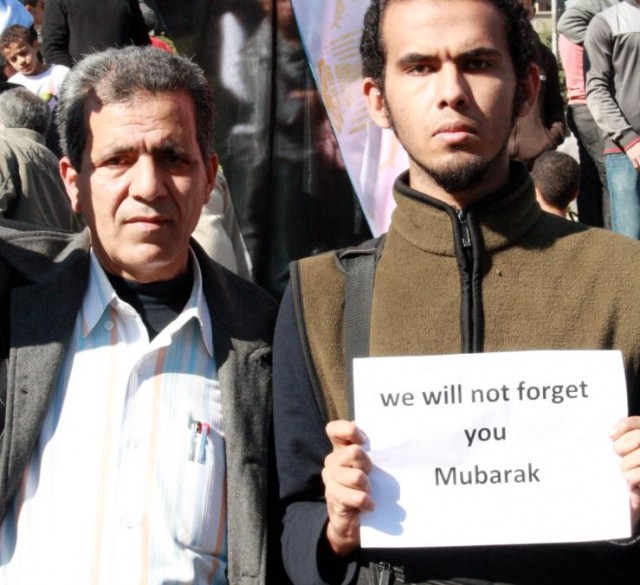
“It may be a small group,” said Sharif, a 29-year-old Coptic Egyptian, looking out the windshield of his BMW into the line of traffic that streamed down the highway in the mid-afternoon sun. “No station on television talk about this. I don’t know why — it’s not fair. All the stations are afraid of Tahrir.”
On this dusty highway, celebration was in the air. A flood of Egyptians were packed into flat bed trucks and traditional third world, go-cart passenger cars. Horns honked. Hands flashed victory signs out car windows. Alongside Sharif, three teenagers on a motorcycle sped between lanes. The center passenger held an eight-foot Egyptian flag high in the air, billowing as they rode. It was Friday and so most of these cars were headed to Tahrir Square, where hundreds of thousands were expected to attend the “Day of Victory,” a celebration of the 18-day standoff that dethroned a president and has shaken dictators across the region.
But at his steering wheel, Sharif’s face was somber. His eyes were fixed blankly on the road. He drove past the exit for Tahrir, continuing on to a counter rally for Mubarak supporters at the Moustafa Mahmoud Mosque in Mohandeseen City.
“My friends are afraid, maybe the people from Tahrir come here,” Sharif said. It was noon and a few hundred supporters had gathered outside the mosque. Securing the grounds were fifteen army infantrymen standing in a line across the distance. Wearing flack-jackets, with AK-47’s strapped across their chests, spaced six feet apart, the soldiers directed arriving cars to parking zones near the rally.

Three weeks ago Mubarak operatives were dispatched to assault, arrest, detain, intimidate and silence the international press. I experienced this personally when I was shot in the leg with a plastic round in a drive-by outside the Ramses Hilton. But in the midday heat, before the Mostafa Machmoud mosque, amid thousands Mubarak supporters — freedom of the press had never found more ardent champions. In the backdrop of chants and songs, flanked by banners of homage, reporters were surrounded by Mubarak loyalists, all eager to praise their leader and register dismay at the revolution that has made him the exile of Sharm el-Sheikh.
“His wife made a great project, with reading for all,” said Ranra, 27, a communications engineer. “Because of her, I love to read. She began a program. We could buy books for one pound [20 cents U.S.] She made hospital for children with cancer — the biggest in the Middle East.”
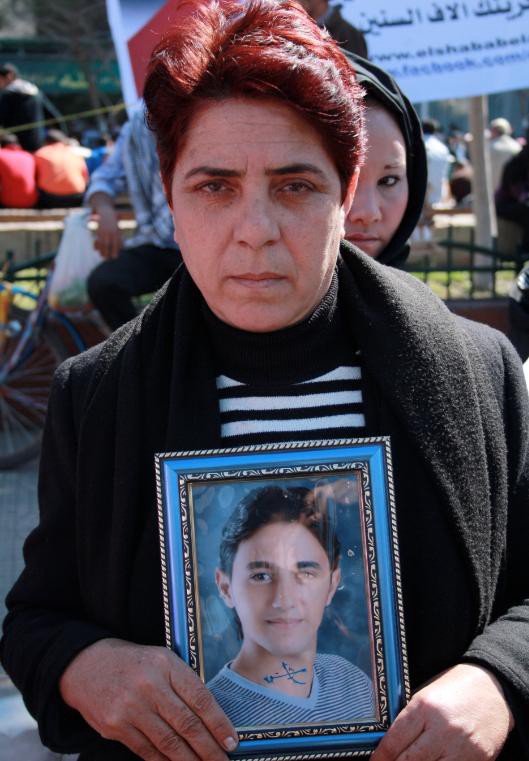
A 52-year-old woman stood cradling the framed portrait of her 19-year-old son, Abanoub Kamal Nashed, one of the eight Copts murdered leaving New Year’s services in the Nag Hammadi massacre of January, 2010. Asked what brought her out to Mohandeseen she replied with bitterness: “They are against our culture with their disrespect of our president.”
“Everyone loves Mubarak,” an elderly woman said, dabbing the tears from her eyes. “We hope he comes back to us.”
In the crowd, supporters held posters of the dethroned. There was Mubarak the young, slim air force commander, standing confidently beside Sadat; Mubarak the diplomat in Ray Bans and European suits; Mubarak the tired and aged with slicked back dyed hair, Botoxed forehead and pruned eyes.
If the gossip swirling through Cairo’s elite circles is to be believed (and the city runs on such gossip), the final face of Hosni Mubarak can be found in Sharm el-Sheikh, where the leader has fallen into a coma, refusing to take the medications that manage a myriad of health conditions related to his bout with pancreatic cancer.
He is there with Alaa, the one-time prodigal son who became a devout Muslim after losing his child to a heart condition. There are reports that on the night of Mubarak’s confused final televised address (it’s widely believed that he fainted during tapings) the Mubarak brothers had to be pulled away from each other after Alaa accused the younger Gamal of ruining his father’s legacy by appointing corrupt associates to influential ministry and cabinet positions in the NDP.

The names and biographies of Gamil’s appointees are well known across Egypt. Among them are Anas El Feky, Minister of Mass Media (and one time lead singer of the Egyptian rock band Riddle); Safwat El Sherif, a head of the congress found guilty of being a pimp in 1967; Ahmed Ezz, a close friend of Gamil Mubarak who controlled two-thirds of the Egyptian steel market (Egyptians torched his company three times during the revolution), leader of the parliament budget committee, and a former drummer.
By 2 p.m., two to three thousand Egyptians had amassed. Supporters formed a line along the back of a black main-stage, waiting to pay their final respects to Hosni Mubarak. At the end of each speech there was applause. After the applause came a few minutes of chanting the refrain, “Mubarak, the world and history will place you on high,” while the next speaker prepared their eulogy.
The messages were scattered and defiant.
One man drew a roar, screaming, “ Al Jazeera! All the people are here!”
A loud ovation came when a woman reminded the audience that “Mubarak would not let America build its military bases here!”
The crowd cheered when a woman suggested, “After this, we should all go to Sharm el-Sheikh and thank President Mubarak for all he has done!”
Standing in the back, away from the noise and the jeers, with arms folded across his round belly, stood a 51-year-old named Achmad.

“He’s a good man. He loves his country,” he said. “I am a diving instructor. I had a business in Sharm el-Sheikh and he came for a visit. It was 1983. I was very young and he had only four people security. It was very simple.”
“You know, he’s a pilot,” he said. “He explained that flying is similar to diving. When he left he said, ‘next week I will send you my sons, to teach them.’”
He did. “The next week he sent me Gamal and Alaa,” he said. “I taught them diving. Good guys. Very polite. They talked about sports. But we were young, so we talked about girls you know….”
Seven years later, in Hurghada, Achmad ran into Gamal and Alaa Mubarak again.
“They had a lot of security. I didn’t like it. They started to become big,” he said. “They were involved in business. I didn’t like the way they started to behave. They changed, like having big cars and talking high. And ten years after that I had a problem. I tried to contact them. I couldn’t get them.”
At center stage, a woman held a bundle of red, white and black helium balloons. The DJ cued one of Egypt’s patriotic hymns, “My Country.” The woman released the balloons. They floated away while the people clapped and sang along to the lyrics, “My country, my beautiful country, my sons and my daughters are for you.”
“God will protect Egypt,” Achmad said, watching the balloons drift away into clear blue sky, “The only thing I hope is that the army is not controlling us.”

Gordon Reynolds is the pseudonym of a teacher in Cairo. He also posts regularly to Twitter, if you follow him there.
Why Women Won't Hop Into Bed With Just Anyone, Unlike Men

Science, answer this age-old mystery for me: Why are women less likely than men to have casual sex with a stranger?
The playing field isn’t level.
Men, after all, can almost be guaranteed a pleasurable sexual encounter if they’re with someone they find attractive. But Conley points to new, yet-to-be published research by sociologist Elizabeth Armstrong which finds “women orgasm only 35 percent as often as men in first-time sexual encounters.”
“Women’s perception that their heterosexual casual sex partners will be unlikely to give them pleasure is not unwarranted,” Conley states.
The good news for dudes is that if women are somehow assured that the guy they’re hooking up with can do sex to them in the right, orgasm-giving, way, they are pretty much as slutty as men are. So, fellas, if you want to do sex to a lady you have two strategies. One: be a lady. “This lack of confidence in men as pleasure-givers was indirectly supported by another of Conley’s experiments, which focused on bisexual women. They were ‘significantly more likely to accept an offer (of a one-night stand) from a woman than from a man,’ she reports.” If that’s not an option — and let’s face it, it’s not — let me suggest that you mention as frequently as possible that you are a blogger for a general interest website that specializes in bear videos and stories about knife crime: Every woman knows that those guys are HURRICANES AT THE SEX-DOING. It’s Science!
Here's Why You Need A Roku Box

Do you want to be your best self? Sure you do. Here’s how to start. Buy a Roku Box. Wait, what? Your life plan for being the best you can be didn’t involve a small $100 box that would allow you to watch Netflix Watch Instantly and all sorts of other online streaming television AND media files from a portable hard drive via USB directly on your TV? Well, that’s why you’re letting us — me, your parents, everybody — all down with what you’ve done with yourself thus far.
It’s fine. You’re behind the curve. You were under the impression that nerds who could setup a modded out XBox (cool job nerds) were the only ones who could watch the best in streaming online video content and not not-pirated and illegally downloaded media. I’ll be honest, that’s what we’d suspected you’d think. You haven’t so much let us down as continued to meet our managed (read “lowered”) expectations of you.
But enough about you failing the people who care about you most in life, here’s what’s great about the Roku Box: You just get it, plug it into your TV, connect it to your Wi-Fi, and then you’re ready to go. Everything on Netflix Watch Instantly is right there! Boom! Hulu Plus! Boom! Let’s kick it up another notch: Plug a portable hard drive into the USB port and, just like that, you can watch all of the episodes of the Korean soap opera “Secret Garden” that you downloaded off the really cool Korean soap opera messageboard just a few days prior! BOOM! It’s really that easy.
So stop trying so hard to be someone you’re not by “going out” and enjoying an “active social life.” You’re just disappointing everyone! Stay at home, watch Korean soap operas on your Roku Box, cool guy.
This content is brought to you by the new Hyundai Elantra which helps you “Snap Out” of your routine to live your best life.
Sponsored posts are purely editorial content that we are pleased to have presented by a participating sponsor, in this case the Hyundai Elantra; advertisers do not produce the content.
How "CSI:NY" Most Definitely Didn't Steal My Story
by Teddy Wayne
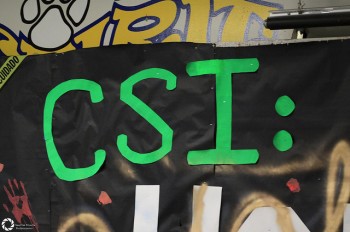
When food blogger Monica Gaudio complained to editor Judith Griggs of Cooks Source magazine about the theft of her online article about apple pie, she asked for an apology and a small donation to the Columbia School of Journalism in lieu of payment. The incident never would have made national headlines had Griggs not condescendingly countered that Gaudio should pay her for cleaning up her article. “But honestly Monica,” she wrote, in what has turned into a widely mocked meme, “the web is considered ‘public domain’ and you should be happy we didn’t just ‘lift’ your whole article and put someone else’s name on it!”
While Griggs’ faulty response was met with uproar, it chimes with the prevailing Wild West mentality of intellectual property on the Internet. As three members of the Authors Guild argued in a New York Times op-ed last week, “The rise of the Internet has led to a view among many users and Web companies that copyright is a relic, suited only to the needs of out-of-step corporate behemoths.” The web is too vast and unsupervised an arena to track down all instances of infringement — and even when they are discovered, Internet material is not considered big enough game to prosecute. “South Park” recently “lifted” dialogue from a web video parody of the film Inception, though its creators apologized and blamed it on confusion over which lines were from the parody versus the original. Jay Leno also got into the act recently, airing a web video and claiming, “We put together a little montage” (the show properly credited the creators the next night). Were they “Saturday Night Live” sketches or “The Daily Show” montages they’d been taking, it’s doubtful either show would have been so bold.
I discovered firsthand how difficult — even, at times, impossible — it is to protect one’s online material when, a year and a half ago, I received an email from a former magazine editor telling me to investigate an episode of “CSI: NY” that contained a number of parallels to an article I had published online.
For those who have made the sage career decision not to be freelance writers, not only is the money significantly lower for online writing than it is for print, but your rights as the creator are far more tenuous. It may seem like an issue that affects only a small, relatively privileged class of American workers, yet we’re transitioning to an online-only model where anyone with an Internet connection can be a journalist (or video parodist, or food blogger, or Facebook updater), and if we wish to uphold the same rigorous intellectual property rights that apply to print, we must begin employing them now with content for the web.
Let’s pause for a minute to pity the poor photographer, whose online intellectual property is in even greater peril — not to mention the amateur photographer, which by the way means you, who has agreed to these terms every time you upload a keg-stand shot to Facebook:
For content that is covered by intellectual property rights, like photos and videos (“IP content”), you specifically give us the following permission, subject to your privacy and application settings: you grant us a non-exclusive, transferable, sub-licensable, royalty-free, worldwide license to use any IP content that you post on or in connection with Facebook (“IP License”). This IP License ends when you delete your IP content or your account unless your content has been shared with others, and they have not deleted it.
My piece, “Sindergarten,” was published on Radar’s website on March 30, 2007 — an April Fool’s hoax that pretended to be a real news article for that then-satirical publication. Written in the style of an alarmist, “kids-today-are-crazy” investigative article for a bourgeois magazine, it fooled a number of readers and web outlets. On April 12, 2007, the article was revealed on Radar’s website as a hoax and I as the author. Not Pulitzer-winning material, but it was all in good fun.
In the “article,” written under the pseudonym of Edward Wain, a wealthy private school teenager named Josh hosts an invitation-only, clandestine party for students at the Upper East Side private school Dalton called “Sindergarten” that is held on a school bus in different locations around New York. The privileged attendees act like kindergarteners — some girls sing “Ring-Around-the-Rosie,” other teens finger-paint and play children’s games, they all receive gold stars on their foreheads at the end of each party — thanks to, as I wrote, “5-methoxy-N n-diisopropyltryptamine, better known as the club drug foxy…a hallucinogen similar to Ecstasy said to facilitate a childlike sense of wonder with the world.”
The “CSI: NY” episode aired January 9, 2008 — more than nine months after my article appeared — and was called “Happily Never After.” Directed by Marshall Adams, the writing credits are to Daniele Nathanson and Noah Nelson, along with series creators Anthony E. Zuiker, Ann Donahue and Carol Mendelsohn. The episode’s first murder involves a cruel hotel owner named Fiona Chisholm who loves only her small terrier, Otto.
The Chisholm character is a perfectly legal “ripped-from-the-headlines” appropriation of Leona Helmsley, whose death the previous year made even bigger headlines when she bequeathed a $12 million trust fund to her terrier. The news about Helmsley is in the public domain (Judith Griggs should know) and accessible to anyone. An article like “Sindergarten” is not; it purports to be an investigative piece of journalism covered only by the writer himself.
In the second murder, a girl is found dead on the windshield of a school bus with a gold star on her forehead. Solving her case takes up the majority of the episode. The detectives eventually trace her death to, according to CSI’s website:
the world of “Wildgarten”: clandestine pop-up parties where New York’s Prep School students turn Manhattan’s kindergarten classrooms [the one in the episode is an Upper East Side private school called Dunhil] into their version of Neverland, complete with the latest designer drug [foxy methoxy]…
… and where the prep schoolers act like little children under the auspices of a young man named Bryce who seems to be the host and who has access to school buses. Girls sing “Ring-around-the-Rosie,” teens finger-paint and play other children’s games, Bryce affixes a gold star to the forehead of each attendee at the end of each party, and a lab scientist describes foxy to the detectives as “methoxy diisopropyltryptamine… also known as foxy… makes Ecstasy look like aspirin, and users claim it induces this childlike wonder.”
Huh, I thought, that’s a lot of — to use a phrase I would soon learn — “random similarities” between the episode and my parodic work of fiction, as my Radar editor¹ noted. Granted, the similarities constituted only five minutes of the 40-minute program. Still, I was curious if what I had written was protectable by copyright law.
As I owned the rights to any audiovisual “adaptation” of “Sindergarten,” I therefore believed I could prosecute anyone I felt was taking too many liberties with random similarities in another medium. Not so; it turned out that I had a conventional “work-for-hire” contract, which meant Radar was the copyright holder and only they could sue.
I contacted Radar’s new management (the original entity had folded and was turned into a full-blown gossip site by American Media Inc. in the fall of 2008) and told them I thought a TV show had a number of similarities with an article I wrote, and since they were the copyright holder, I would provide them all the details in exchange for a percentage of any future settlement their legal team might win.
They were interested, and offered me ten percent. A few months later, though, Radar informed me that they were not pursuing the case without telling me why, citing attorney-client communications.
Fine, I said; how about if Radar transfers the copyright to me for a limited time and I’ll prosecute, at my own cost?
Sure, their lawyer told me over the phone. My cut of the settlement in which I would now be doing the legwork and bearing all the legal fees?
Still ten percent.
I was more concerned about the principle than the payday, so I agreed verbally. However, I couldn’t find any law firms that would take me on a contingency basis for such a small potential payout. In the meantime, my first novel was published in April, and I focused my energies on it.
Eventually, in the fall, I heard about the wonderful organization Volunteer Lawyers for the Arts, which provides pro bono legal aid to artists who can’t afford representation. They wouldn’t take my case until I had the copyright, so I informed Radar’s lawyer that my novel’s publication and the search for new representation had delayed me, but I was now ready to sign the contract transferring the copyright to me. His response:
Radar is no longer interested in the proposal and is ending all negotiations. Radar believed you abandoned your pursuit of this idea after not hearing from you for several months and considers this matter closed.
Radar is the owner of the copyright, per the agreement that you previously entered with it, and under no legal obligation to move forward, make any transfer, license or sale, inter alia.
There went my recourse to the justice system. (For the record, if anyone out there has a lawsuit they believe has merit and wants to prosecute and pay all legal costs while giving me 90 percent of the settlement for doing nothing, call me.) All I really desired was some explanation from “CSI: NY”; perhaps they weren’t aware that the two writers had come up with these random similarities. I wrote a letter to the show’s production company, CBS Television Studios, detailing the correspondences between my article and their episode. I expected either silence or, at best, a polite swatting away of a pesky fly. If they truly deemed my case without basis, I doubted they would waste their expensive in-house counsel’s time until I legally filed a complaint.
A few weeks later I received a six-page, single-spaced letter from CBS’s Vice President, Assistant General Counsel. She dismissed my claims of infringement because copyright does not protect ideas, only the “expressive elements of those ideas.” Therefore, the concept of “privileged New York City youth attending clandestine parties where they engage in illegal drug use and revert to pursuits and conduct typical of kindergarteners” is not protectable; only the expressive elements, “such as dialogue and plot,” are. And what seemed to me disturbing coincidences were, according to her — here’s the phrase I learned — “random similarities.”
In my view, though, the Sindergarten party wasn’t simply an idea or concept; wealthy teens taking foxy and acting like little kids is the article’s entire “plot” and constitutes its “details.” And even in the context of the larger murder plot on “CSI: NY,” for those few minutes, the episode’s plot and details are based around the Wildgarten party.
Her arguments turned to the contrasting mediums and tone. “The ‘Sindergarten’ concept is depicted in what appears to be a legitimate news article, not a dramatic one-hour television show involving the solving of two murders,” she wrote, and “the Episode’s tone is dark, and it clearly does not end as optimistically as the Article.” Moreover, “the Article serves as a piece of social commentary,” as it postulates (satirically) why Sindergarten parties have become a phenomenon among prep schoolers who grow up too quickly in the pressure cooker of upper-crust Manhattan, whereas the episode offers no such analysis. By that rationale, I can legally write a short story based on a recent “CSI: NY” episode — and, to make my case more airtight, just make the ending happier and with social commentary (Gary Sinise joyfully returns to his theatrical roots after becoming sickened by the phony entertainment industry!).
The gold star, Ring-Around-the-Rosie, finger-painting and other children’s games, she contends, “are few and insignificant in the context of the Episode,” even though the gold star, the morbid lyrics of “Ring-Around-the-Rosie,” and finger-painting all help provide the main clues for the murder. One detective sums up the evidence as such: “So we got finger-paints, kiddy clay, and a gold star. Items that might be found in a kindergarten class or a toy store.” In addition, the lawyer argued, “A number of them logically flow from the idea of a kindergarten-themed party, and are therefore not protectable expression.” They do indeed logically flow from a kindergarten-themed party; so do, say, a number of other songs children might be singing besides “Ring-Around-the-Rosie,” a number of other activities besides finger-painting, and a number of other objects besides gold stars.
As for the expressive elements of the drug foxy, neither the real chemical name is protectable (I’ll give them that) “nor is the commonplace phrase ‘childlike wonder,’ whether on its own or referring to a drug-induced state.” Perhaps not on its own, but to choose the specific drug of foxy, to provide its full name, and then to state for both that it induces a “childlike [sense of] wonder” seems like a lot of… random similarities.
Her biggest salvo is that the rest of the episode has nothing to do with my article, which I never claimed; my only area of interest was the five-minute portion that I believed contained a number of similar “expressive elements,” just as the rest of “South Park” and “The Tonight Show” had nothing to do with those web videos. Based upon all the evidence, she wrote, “no reasonable person could conclude that the Episode infringes upon any protectable elements of the Article.”
Finally, CBS’s lawyer wrote that, after conducting an investigation, “we are confident that no one who participated in the writing of the Episode was aware that the Article was anything other than what it purported to be — a legitimate news piece reporting on matters of public interest… Typically, in practice, factual works do not enjoy the level of copyright protection accorded to fictional or creative works because facts are in the public domain and may be repeated or incorporated into other works without permission.”
Putting aside the admission that the “CSI: NY” writing staff had, in fact, read my article, I’ll give them the benefit of the doubt about no one’s knowing it was an April Fool’s hoax. But that’s irrelevant; a uniquely reported news article like “Sindergarten” — unlike, again, the details of Leona Helmsley and her little dog, too, which were disseminated to everyone — is as protectable as the short story it actually is. Neither form it might take resides within the “public domain” — and accidental appropriation is never a valid defense.
It was solely my fault for not being sophisticated enough to scrutinize my Radar contract more closely and request the copyright. But most freelance writers, happy to get a chance to publish at all in this collapsing industry, do the same. And all writers hope that, if there’s ever an infringement issue, their publisher will defend them. Yet online writing is still a second-class citizen whose protection we guard less zealously. Had my Radar article been in ink, I don’t think any television writers could have deemed it a viable free source for the “concept” and “random similarities” — and, very likely, my contract would have preserved the copyright for me.
I concede that I’m not grievously injured by any of this (unless one takes into account hypothetical lost income from CBS’s not optioning my article). I’m even grateful for the learning experience. As a writer with no legal rights to defend myself, all I can do is exercise my freedom of speech (so long as I say nothing libelous). And I can also offer this Monica Gaudio–style deal:
I’ll publish a follow-up here wiping the slate clean and singing the praises of CBS if it donates what might have been an expected outcome of a successful lawsuit — around $20,000 (or about seven seconds of ad time during a primetime episode of “CSI: NY”), an entertainment lawyer with decades of experience told me — to these three institutions, divvied up equally: Volunteer Lawyers for the Arts; the Authors Guild, which advocates for the rights of writers; and 826 National, a nonprofit volunteer tutoring organization I work with that provides in- and after-school educational and literacy support to underserved children.
These institutions all seek to cultivate or protect writers in various forms. But honestly, CBS, as any reasonable person could conclude, the many similarities between them are all random.
Teddy Wayne ©2011. All Rights Reserved. Teddy Wayne is the author of Kapitoil. He lives in New York. Photo by Dennis.Vu, from Flickr.
¹ The Radar editor was not former Radar editor turned Awl proprietor Alex Balk, who was not involved with “Sindergarten” and does not watch “CSI.”
Christian Aid Worker Danny Pye Has Been Held in a Haitian Prison Since October
by Abe Sauer
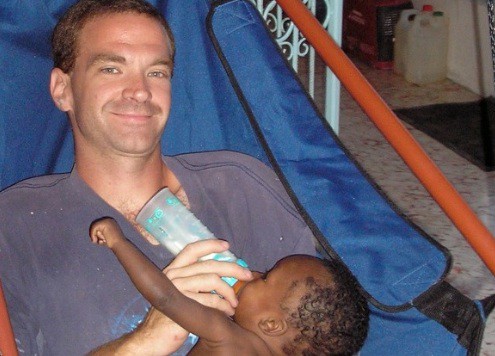
“I am amazed that I could spend four months in prison with no charge and the embassy does nothing,” said Danny Pye. “It’s just weird.” But so far, Pye is lucky. He’s only had malaria, several bouts of gastroenteritis and some kind of fungal infection — but not cholera. Many of the other 20-odd men that share his small room have not been as lucky.
Pye, an American, has been in prison in Jacmel since Oct. 13, 2010. He has not been charged with any crime. The only people who seem to know this are a few friends in Haiti, the country’s Ministry of Justice, newly elected Haitian senator (and former Jacmel mayor) Edo Zenny, the judge that refuses to sign his release, the NGOs with which he’s been affiliated, his wife, Leann, the 22 Haitian children whose only home is the orphanage that he and his wife built — and the U.S. Embassy.
A friend of Pye’s was able to get a cell phone into the Jacmel prison a couple days ago and he spoke with The Awl for the first time.
Thanks to cholera, the prison is quite literally a toilet. The only new structure at the prison is a building that’s been painted green and white, the color combo reserved in Haiti for medical buildings. This overcrowded prison within a prison houses inmates suffering from cholera, TB and HIV.
Reinforced last July after the earthquake, a Red Cross engineer said that Jacmel’s prison was vastly improved by the addition of bunk beds because “each bed has three levels and is big enough for at least six people to sleep in.”
Pye’s wife Leann says the Red Cross’ already-horrible description of the prison “makes it sound much better than it actually is.”
Pye’s cell, which he estimates is 10 by 12 feet, houses 25 prisoners. (That’s fewer than previously, when people were getting cholera.)
By car, Jacmel (Jakmèl) is four hours south of Port-au-Prince, on the south seaside of the island’s long peninsula. The city itself is home to 40,000 or so and the surrounding area another 100,000. With beaches and architecture built in the wonderful style of New Orleans by wealthy 19th-century merchants, Jacmel is not the desperate urban picture of Port’s Cité Soleil, the only Haiti most Americans know exists.
Pye is not one of the aid workers who flooded into the nation after 2010’s earthquake. In 2003, Danny Pye and his wife Leanne moved to Haiti to start an orphanage. They established the Joy in Hope Ministries in 2008, which now operates 16 schools that teach over 3,000 children. Danny and his wife themselves operate an orphanage, today home to more than 20 children: Mackendy, Evens, Berline, Blanca, Omega, Loudrige, Rico, Chachoue, Lovelie, Toto, Ticarlis, Magdaline, Elinda, Woody, Mackenson, Diane, Nerry, Nesley, Vania, Patrick, Tina, Slendia, Riann.
Last year, Danny and Leann separated from the ministry they founded to go their own way. After some negotiations and conflict, Pye and a representative of the organization appeared before a local magistrate on October 13th, to negotiate the legal dividing of property and other assets. Pye, to everyone’s surprise, was ordered to prison.
No charge was leveled by the judge against Pye. He was only told that he would not be released until he signed over his old assets — which he did, on October 16th. His family was then told he was being held in the court’s custody, pending an investigation. Haitian law allows judges to imprison a person for up to 90 days without charge while awaiting an investigation.
Danny’s wife immediately contacted the embassy.
Ryan Price, a longtime resident of Haiti and missionary with the Fellowship of Christian Optometrists who took the phone in to Pye, said that, recently, “they have been redoing the sewers under the prison, so the whole block smells like sewage.” Price said that Danny does get outside for some time every day; he used some of that time to carry water to other prisoners. Recently, “he is too weak to do this.” Being out in the yard can be dangerous, as fights are a regular occurrence. Fights aren’t the real danger, Price said: it’s the guards who storm the yard intent on breaking it up. They swing batons at anything that isn’t already lying flat on its face.
“Physically, I’m feeling better. I’m back to holding down food and liquid,” said Pye. That wasn’t the case two weeks ago, when Pye began not sleeping at all and retching after meals. The “food” he holds down is crackers.
There are about 200 people on his small floor. Pye said that a third of them are here for trumped up charges, or no charges at all. “When I first got here I thought it was closer to 50 percent,” Pye said. “But then you get to know people a little and… well….” He knows at least one cellmate who has been held for years with trial. “On Christmas Eve, a 14-year-old kid was brought in for stealing a goat worth maybe 12 dollars. He still hasn’t seen a judge,” he said.
It was also on Christmas Eve that Pye was released — for the first time. But, as he was walking out to meet his pregnant wife, Pye was spun around and returned to his cell. He didn’t even make it to the car: the same judge had issued a new charge, this time for possessing illegal documents.
It’s not been confirmed that those “documents” (Pye’s government-issued identification card) are “illegal.” It was the judge himself who did not understand the very laws he was there to enforce.
* * *
A reliable and trustworthy justice system can be considered the most important building block of a functional democracy. Lisa Quirion, a former Deputy Warden at the Correctional Service of Canada who worked with the UN Stabilization Mission in Haiti (which goes by the acronym MINUSTAH), said (before the earthquake), “People want to build hospitals, they want to build schools, they want to put a well in the town, but nobody wants to invest in prisons.”
It’s not just unsexy to invest in prisons, but in the whole justice system in general. Still, in the 1990s, USAID provided around $27 million to fund the Administration of Justice Program in Haiti which brought in American legal experts to improved magistrate, prosecutorial and judicial management training as well as expanding citizen access to justice services.
Today, a new joint program between the UNDP and MINUSTAH to improve “ethics, judicial competences, the application of just laws, public persecution, individual liberties in the judicial process, and economic and financial infractions” plans to involve “roughly one hundred” prosecutors… “by December 2011.” A spokesman for the UNDP said that the entire 2011 budget for training in the field of justice in Haiti is $500,000. (That’s a 100 percent increase over the 2010 budget of $250,000 for training in Haiti’s justice system.)
* * *
On February 18th, the head of Haiti’s justice system came to visit Pye, and told him that the judge had admitted the false documents charges were fraudulent. The judge, however, wants to revisit a contempt of court charge. Pye was told that he will be out next week. “It’s kind of the running joke of the place,” Pye said. “Each week it’s, ‘Oh, you’ll be out next week.’”
“I haven’t packed a bag,” he said.
Pye’s release would mean he might not miss the birth of his son. Leann remained in Haiti for much of February, to care for the orphanage. While seven months pregnant, she would ride on a scooter taxi to get supplies. She is back in Florida, where she and Danny own a small home, and her delivery date is imminent.
With Leann gone, the children from the orphanage bring Pye what meals they can.
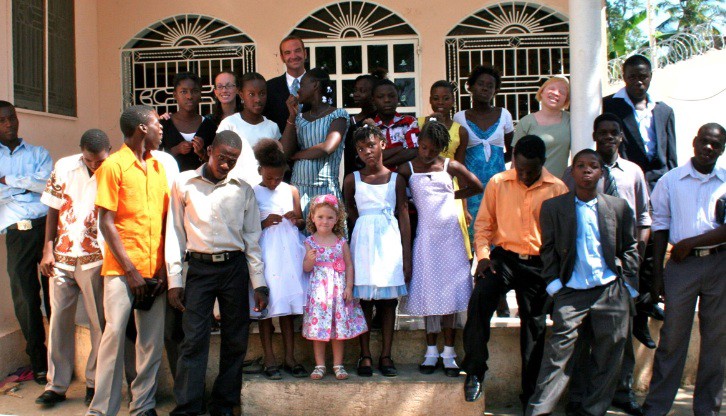
As forgiving and good-spirited as Pye is (his positive disposition and good humor over the phone were remarkable), he is exasperated with the U.S. Embassy inaction. “I’ve never heard of a situation in which an American was held for four months without charge and the embassy did nothing,” he said. Medicines and other necessities have been supplied by friends or family. “I’m more disappointed than anything else,” he said.
Leann said that the embassy has, at best, given the situation a perfunctory treatment. Danny said that the few times embassy officials visited, their conversations were short and unproductive. Leann said they just told her to go hire a Haitian lawyer, which she did.
In November, Leann sought assistance from her U.S. Senator, George LeMieux. The response was an email with a PDF attachment telling her that the senator, due to privacy rules, would not follow up until Leann could “print, complete and return it to our office via fax.” In Haiti, faxing anything was impossible. Leann tried to get the paperwork together — and then this January, LeMieux was replaced by Marco Rubio.
Leann repeatedly followed up with the embassy. The embassy said it could not take diplomatic action, seemingly saying that it had no influence in the nation beyond what existed in the most formal of diplomatic rules. Just a year earlier, in a cable published by Wikileaks, the Embassy spoke of how a “key to our success and that of Haiti” was the embassy “managing” President Preval. How effective can the State Department be in influencing Haitian politics and reconstruction if it can’t even move the wheels for one American in prison?
* * *
There’s a deeper irony, because when the diplomatic community needed Danny Pye, he was there.
Seventy percent of structures in Jacmel were damaged or destroyed after the quake. With the aid focus on Port-au-Prince, few supplies reached beyond the city. What aid could get in had no on-the-ground organization. Creole speakers, Pye and Leann were able to quickly organize and reopen the airport. The two, with a team of Haitians, staffed and ran the Jacmel airport until the Canadian military arrived. Experienced in the area, and trusted by the community, the Pyes were invaluable in the international aid effort for which the diplomatic and NGO community took, and continues to take, so much credit.
And just a couple years ago, the US Embassy asked the Pyes to serve as wardens for the Sud-est (one of Haiti’s ten regional départements in which Jacmel is located).
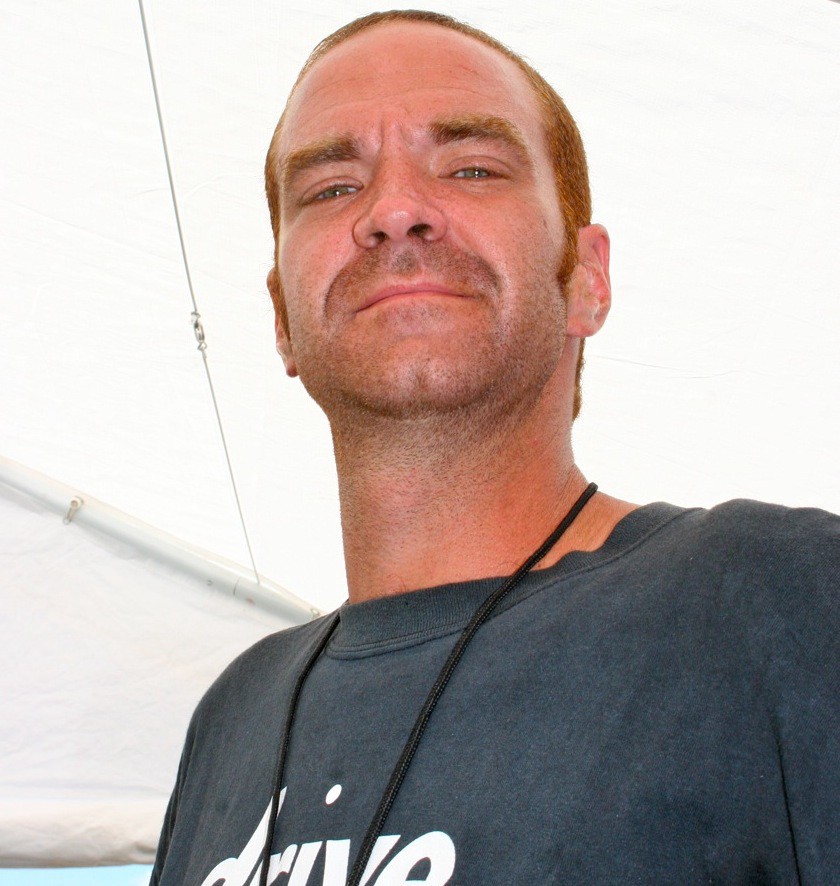
Two weeks ago, Leann received an email from Brandon Doyle, the embassy’s vice consul. Doyle wrote that the embassy had “learned that, unfortunately, no action has been taken on his case.” Doyle went on to acknowledge that “this can now be considered a serious violation of Haitian law since your husband has been detained without charges for a period longer than allowable according to the laws of Haiti.” Doyle said that the embassy would prepare a formal diplomatic note addressed to the Haitian Ministry of Justice “calling for action on Mr. Pye’s case.” Doyle wrote this action is “the most formal and forceful course of action available to us and allowable under diplomatic practice” and that the note would be “sent early next week.”
That email, of February 8th — a Wednesday — ,meant that, after months, the embassy would not be taking any action until nearly a week later.
If the embassy’s limp official reaction to Pye’s situation is deplorable (and it is), its public reaction is inexcusable. Why, to this day, has the embassy not issued a public statement about Danny Pye?
The vice consul is certainly correct describing the “note” to the Ministry of Justice as the only course allowed it “under diplomatic practice.” But this says nothing about the use of the press, easily as powerful a diplomatic tool as a formal note. Within a day of the arrest of an American accused of shooting citizens in Pakistan, embassy officials were publicly calling for his release. The State Department has loudly, and continually, issued statements calling for the release of the American hikers arrested in Iran (who are now on trial). State Department officials have even issued a demand for the release from Syrian prison of a young blogger… who isn’t an American. When Khairy Ramadan Aly, an Egyptian carpenter employed by the embassy in Cairo, was killed just two weeks ago, the State Department issued statement of condolences from Secretary Clinton.
The embassy in Port-au-Prince as well issues press releases all the time. But not for Pye, even as he rotted away in a U.S.-funded hellhole, kept from doing a job that U.S. governmental bodies are proving themselves increasingly incapable of performing.
We spoke with a few journalists, one for a major US national source, all of who said they had never heard of the Pye case. Asked if they would have pursued the story had the the embassy in Port-au-Prince issued a statement about it, all confirmed that it absolutely would be newsworthy.
The embassy has not responded to numerous calls and emails made by The Awl.
Pye is a missionary but he’s of an entirely different stripe from the ministries with logos printed on every bit of aid they hand out. Pye went to Haiti to do with his bare hands what billions of dollars of American aid was failing to do. Pye, a U.S. taxpayer, remains in a MINUSTAH-run U.S.-subsidized prison.
But then this is Haiti, a place few can find a reason to care about. Unless, of course, 300,000 die… or Sarah Palin visits.
Residents of Florida, the Pye’s representatives are:
Senator Bill Nelson
Ph: (202) 224–5274
Email
Facebook
Rep. Vern Buchanan
Ph: (202) 225–5015
Email
Facebook
Senator Marco Rubio
Ph: 202–224–3041
Email
Facebook
An especially good target for pressure is Republican Senator Marco Rubio. As a member of the Christ Fellowship Church in West Kendall and a favorite of the Christian Coalition, one would think Rubio would be especially interested in (and in an especially good position to take advantage of the benefits of) seeing to the speedy release of one of the more (genuinely) faithful and pious of his constituents.
Never contacted a member of Congress? Email makes it easy, fast and free of cooties. For example, a message might go:
Dear Sir,
I was shocked to learn that Danny Pye, a Christian missionary, has been held in a prison in Jacmel, Haiti, for more than four months without charge. I was even more shocked to learn that the U.S. Embassy is aware he is there, admits he is innocent and yet claims it is helpless to do anything.
Danny Pye, a resident of Florida, desperately needs your help.
Here is the final kick to the stomach.
Through it all, Pye tells us his greatest fear, a sentiment echoed by his wife, is that this will somehow jeopardize their family’s opportunity to stay in Haiti and continue to operate the orphanage and school. “I plan on supporting them for years to come,” Pye said, just before handing the phone back.
Abe Sauer can be reached at abesauer at gmail dot com.
A Guide to Topics Discussed and Ignored in Today's Election in Chicago
by Mark Bergen

Discussed
• Crack
• Wimps
• “Starving people in Africa”
• Coffee and donuts in an airport
• A woman’s own mind
• “The Un-Rabbinical Master of Nine-Fingered Sign Language”
• Hitler
• A Twitter feed
• A Rahm Tax
• A landslide
• Hiring 2,000 more cops
• Cutting $1 billion from the budget
Not Discussed
• Paying for 2,000 more cops
• Finding $1 billion to cut from the budget
• “…Toxic diesel pollution breathed every day by hundreds of thousands of Chicago-area commuters.”
• Anything beyond the “same, shady answers”
• The city’s financial crisis
Mark Bergen lives in Chicago. Do you also love urban policy? Sign up for City Ledes, the comprehensive biweekly newsletter about the life of cities.
